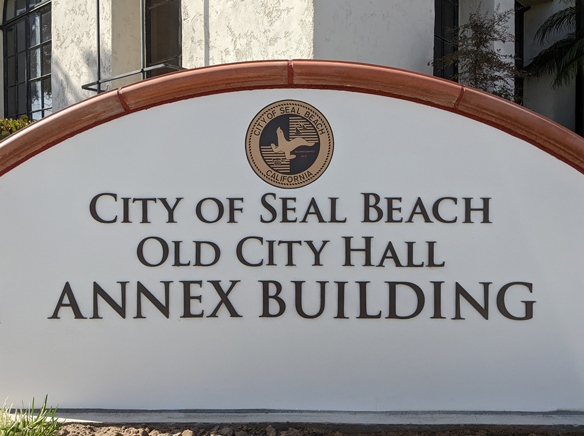Multiple City Council members, and two members of the Environmental Quality Control Board were among those who attended the Wednesday, Sept. 11, community meeting about the G&M Oil Gas station at 1300 Pacific Coast Highway.
Carl Turner of Atlas Environmental was the primary presenter for the meeting.
Turner promised more testing would be done.
Space makes it impossible to cover every word spoken during a meeting filled with environmental jargon.
“I am one of the project representatives for GM on this site assessment and cleanup,” Turner said.
One issue of concern were methane levels. An Aug. 16 letter from Geniece Higgins, a supervising hazardous materials specialist with the Land and Water Quality Section of the OC Health Care Agency, told area residents that two sampling points at the gas station at PCH and 13th Street showed increased benzene, ethylbenzene, naphthalene, and methane.
“Based on the high methane detections, the Orange County Health Care Agency (OCHCA) and Atlas Environmental conducted a site visit with the Orange County Fire Authority and So Cal Gas on August 13, 2024,” Higgins wrote.
During the Sept. 11 presentation, Turner said methane levels ranged from 8.12 to 61%.
According to Turner, Southern California Gas, the Orange County Fire Authority Hazmat and Orange County Health Care Agency Hazmat teams were unable to replicate the methane levels Atlas had found.
The source of the methane was being reviewed.
According to one of the slides, methane monitors were expected to be placed in a residence. A slide said methane monitors would be placed in an apartment lobby and in commercial buildings on PCH.
“I’m still confused,” said Perrell. “I still don’t have after I was looking for about the methane concentration the first sample, which is on this table, one that got sent out for email, we had 61% methane at BPA, and then we called up the fire company, and they did their own sampling, and it was fine.”
Turner said it wasn’t a concern. “It wasn’t a concentration, an established concentration. It was based on combustible gas,” he said.
Resident Theresa Miller was concerned about long term issues at the site. “You’ve done a lot and you’ve removed a lot of material. So over 30 years, it just didn’t stop at your planters. It had to, you know, go farther out,” Miller said.
“I have dead trees. I have fruit trees that have rotten fruit on them. I won’t eat it,” Miller said.
“One hundred percent, you need to dig it up. That’s not right. It’s the people, by the way, the people who lived in that house next door, you just moved out at the beginning of August, so they have been exposed, and their baby has been exposed to that. There’s a huge uptick in cancer on our block. My dog has died of brain tumor,” Miller said.
“You know, you can’t tell me this is like, this is safe, because now you have good data and it’s contained. That’s not how it works. So what else are you willing to do?” Miller asked.
“I do hear you,” Turner said.
“I don’t know what to tell you,” Turner said.
A man in the audience said: “We don’t want to wait another 30 years. You need to literally dig it out, like we did in ARCO.”
He was apparently referring to the ARCO station on Pacific Coast Highway that was demolished in late 2010.
In 2009, four Bridgeport area homes were evacuated due to the discovery of gasoline vapors under their properties.
Residents ultimately called for the physical removal of the soil, also known as “dig and haul”.
In 2015, the city asked ARCO to beautify the location.
Perrell called for a health risk assessment at the site.


